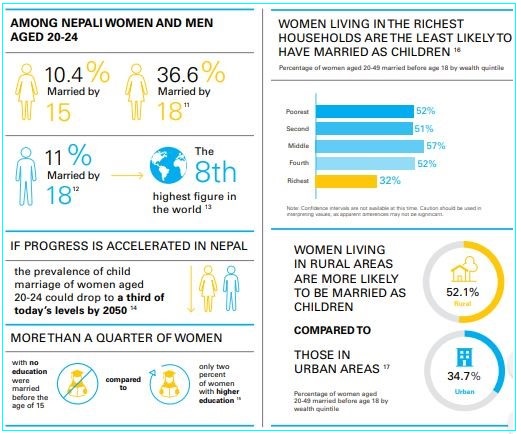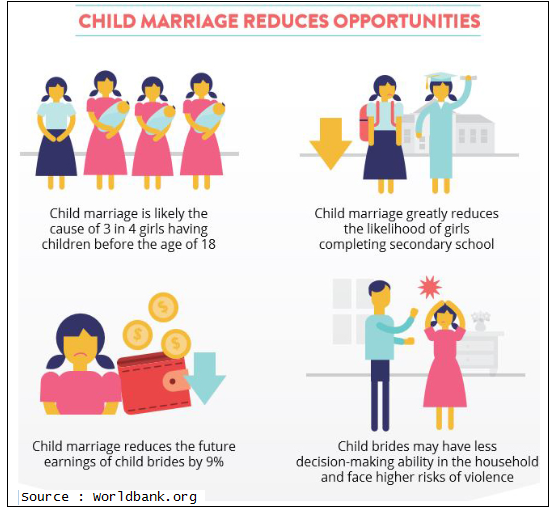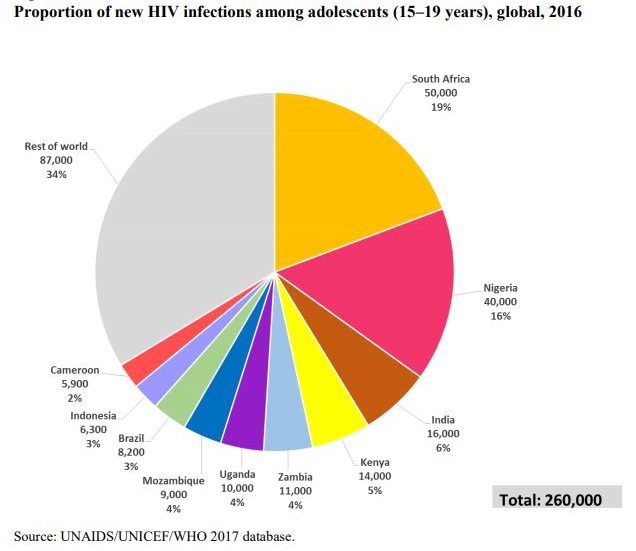The post Nepal Lockdown Triggered Massive Job Losses appeared first on Nepali Sansar.
]]>53 percent of Nepalis were devastated as they lost their jobs during this second-wave lockdown. Additionally, the lockdown measures claimed both the jobs and income of 40 percent of the citizens.
The survey, which was performed during the third quarter of May 2021, was conducted by Sharecast Initiative Nepal with the help of UNICEF. The survey was conducted across 3,000 families with kids across Nepal.
People the witnessed income loss in the form of remittances and sales dips. Other sources of additional income were also impacted.
The survey concluded that agriculture and tourism, Nepal’s most significant employment sectors, suffered the most. This triggered the massive Nepali downslide on the employment front.
The employment seekers of Bagmati and Karnali were the worst hit, as per the survey.
“This large-scale job and income loss threaten to further deteriorate the socio-economic well-being of children and their families,” the survey said in its findings.
The survey cautioned that due to loss of income, most families might trim down food consumption and other essential requirements to ax expenses. About 99 percent of families are not receiving any monetary support to spar with these unexpected hardships.

UNICEF’s survey, Child and Family tracker, observed that more than 60% of households with kids suffered livelihood and economic losses in the initial two months of the lockdown.
Despite most of the aggrieved families recovering from the loss since 40 percent of the families are prone to slip into poverty, UNICEF emphasized.
Acting on the startling conclusions of this survey, UNICEF has transferred monetary resources to Nepal to safeguard over 10,000 children. The United Nations agency has commended Nepal on the expansion of the Child Grant Program and the social security allowance boost. The Nepali government has hiked the social security allowance 33 percent.
“It is important to increase the amount of the transfer to deal with the additional stress caused by the pandemic,” the UNICEF survey said.
Stay Tuned to NepaliSansar for Latest Nepal Economic Updates!
More News:
- Nepal’s national capital to stay in lockdown until June 21
- Nepal Sees Gradual Decline in Daily COVID-19 Cases!
- Nepal’s MIC Status To Be Endorsed At UNGA!
- Nepal SEE 2021 Results to Release by July 30!
- 10 Reasons Why Nepalese Love To Buy iPhone
- Nepal Budget FY 2078/79 (2021/22)
- 10 Exciting Things To Buy In Nepal For Souvenir
- 12 Best Movie Theatres in Nepal You Must Try!
The post Nepal Lockdown Triggered Massive Job Losses appeared first on Nepali Sansar.
]]>The post UN and its Partners Launch ‘COVID-19 Response Plan’ in Nepal appeared first on Nepali Sansar.
]]>The response plan aims to assist 750,000 Nepali citizens who have become the most vulnerable by the viral outbreak of COVID-19.
Endorsed by both the Nepal Humanitarian Country Team and the government’s Crisis Management Centre, the plan aims to strong-arm the Nepal government’s COVID-19 response.
“The current outbreak is having a devastating impact not just on health but across all sectors, hitting the poorest and most marginalized people in Nepali society the hardest. The COVID-19 Response Plan that we are launching today calls for swift action and international solidarity that is desperately needed to save lives and prevent unnecessary suffering today, tomorrow, and in the difficult weeks to come. We have no time to lose,” the statement quoted UN Resident Coordinator Sara Beysolow Nyanti.
After several months of relatively low daily cases in Nepal, infections began to increase rapidly in mid-April, rising from 150 cases per day in early April to over 8,000 cases per day since 5 May. Over 44% of COVID-19 tests nationally are coming back positive, suggesting that case numbers are much higher than reported.
Despite the surge beginning almost three weeks after India’s, Nepal is experiencing roughly the same number of daily cases per million as India, but with a health system whose capacity is much more limited. However, the Himalayan country is battling the virus with limited healthcare resources.
With COVID-19 health issues taking precedence, WHO felt that Nepal is beginning to ignore other pressing issues such as malnutrition, chronic hunger, and economic setbacks
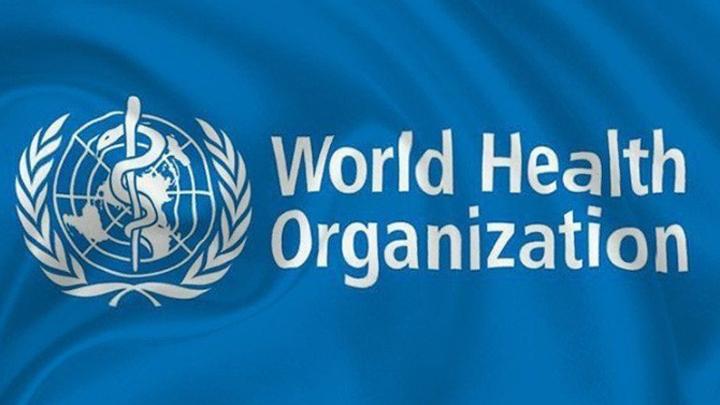
Elke Wisch, UNICEF Representative for Nepal, said the rising cases had crippled Nepal’s fragile healthcare facilities. “As we respond to the immediate health crisis to help save lives, we cannot forget the devastating broader impact the current COVID-19 surge has on children and young people in Nepal,” she said.
She further added that the kids are now cut off from vital support networks. With both parents and caretakers falling prey to the pandemic, Elke lamented that the kids are now being subjected to scenes which they ought not to witness. The representative prayed that the world comes together to save the children of Nepal.
Dr. Rajesh Sambhajirao Pandav, WHO Representative to Nepal, commented that the unwanted surge increased the demand for oxygen cylinders and other medical supplies. “While WHO and partners are supporting the Nepali Government’s endeavors in mounting a robust response, fighting the pandemic necessitates international solidarity. I appeal to friends of Nepal from around the world to come forward and help with fulfilling the needs of the hour,” the statement quoted Sambhajirao as saying.
“The Government of Nepal is leading the response, but capacities are stretched to breaking point and international solidarity is urgently needed to assist the most vulnerable people with life-saving response activities in health, food security, education, nutrition, shelter, protection and water and sanitation,” the statement further said.
Stay Tuned to NepaliSansar for Latest Nepal COVID-19 Updates!
More News:
- Life-saving Remdesivir to be Made-in-Nepal!
- PM Oli Dares Opposition Parties to Topple his Government!
- Nepal’s Anshika Sharma Unveils National costume for Miss Universe 2020
- Support Pours In As Nepal Grapples with Second Wave!
- Nepali Mountaineer Kami Rita Treks Mt. Everest for Record 25th Time
- 2021 Oscar Winners: The Complete List! Congratulations to ALL!
- Mexican Beauty ‘Andrea Meza’ Becomes ‘Miss Universe 2021’!
The post UN and its Partners Launch ‘COVID-19 Response Plan’ in Nepal appeared first on Nepali Sansar.
]]>The post Globally, 818 Mn Children Lack Handwash Facilities At Schools: UN appeared first on Nepali Sansar.
]]>According to the WHO and UNICEF Joint Monitoring Programme (JMP), around 818 million children worldwide lack basic handwash facilities at their schools, putting them at high risk of COVID-19 and other infectious diseases.
Among the 818 million children,
- 355 million went to schools which had water facility for handwashing but no soap
- 462 million went to schools which had no water facilities for handwashing
- More than one third (295 million) children are from sub-Saharan Africa
“In the least developed countries, 7 out of 10 schools lack basic handwashing facilities, and half of the schools lack basic sanitation and water services,” read the report.
Moreover, 43% of the schools worldwide lacked basic handwashing facilities in 2019, an essential condition for schools to operate safely during the pandemic.

In the top 60 countries at high risk of health and humanitarian crises due to COVID-19
- 75% of children lacked basic handwashing service at their school at the start of the outbreak
- 50% of children lacked basic water service
- Over 50% lacked basic sanitation service
One in 3 schools worldwide had either limited drinking water service or no drinking water service at all. Around 698 million children lacked basic sanitation services at their schools.
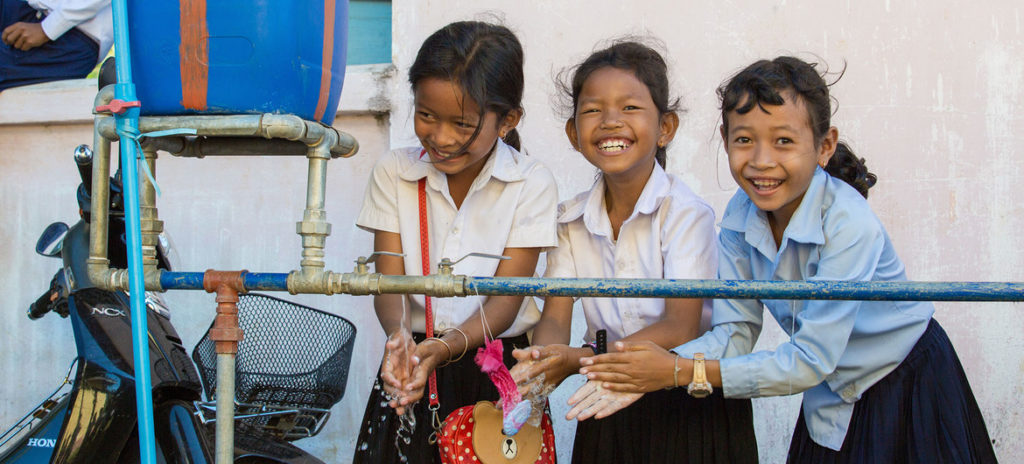
“Global school closures since the onset of the coronavirus pandemic have presented an unprecedented challenge to children’s education and well-being,” exclaimed Henrietta Fore, UNICEF Executive Director.
“We must prioritize children’s learning. This means making sure that schools are safe to reopen with access to hand hygiene, clean drinking water and safe sanitation,” he added.
[Also Read: COVID-19 to Cause 4000 ‘Child Deaths’ in Nepal: UNICEF]
The report presented several resources necessary for COVID-19 prevention and control in schools, including ten immediate actions and safety checklists.
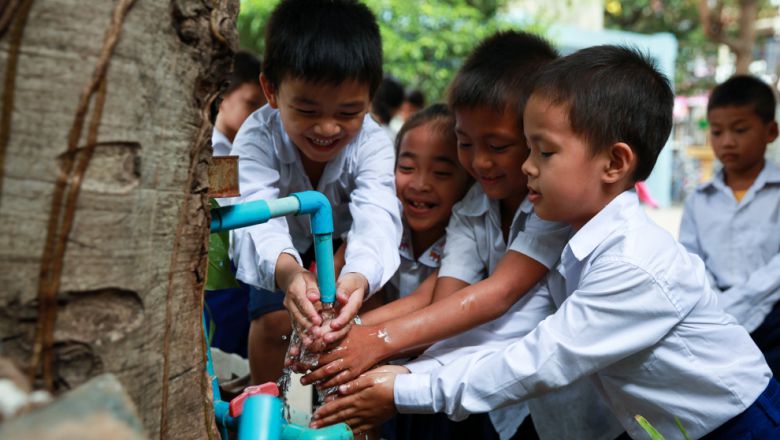
The guidelines include
- Several WASH-related protocols on hygiene measures
- Use of personal protective equipment
- Cleaning and disinfection
- Clean water
- Handwashing stations with soap
- Safe toilets
Revealing the negative impacts of prolonged school closures on children’s safety, well-being and learning, the UN bodies stressed the governments to focus on safe reopening and operation of schools during the ongoing pandemic.
The post Globally, 818 Mn Children Lack Handwash Facilities At Schools: UN appeared first on Nepali Sansar.
]]>The post UNICEF CRC@30: Sachin Visits Nepal, Plays 8-over Friendly Match! appeared first on Nepali Sansar.
]]>Yes, you read it right!
The former Indian cricketer Sachin Tendulkar led the Indian cricket team called ‘Team Blue’ in a match with Nepal’s ‘Team Red’ led by former Nepali cricket captain Binod Das.
That was an 8-over friendly match between the two sides at the Tribhuvan University Grounds on November 16, 2019.
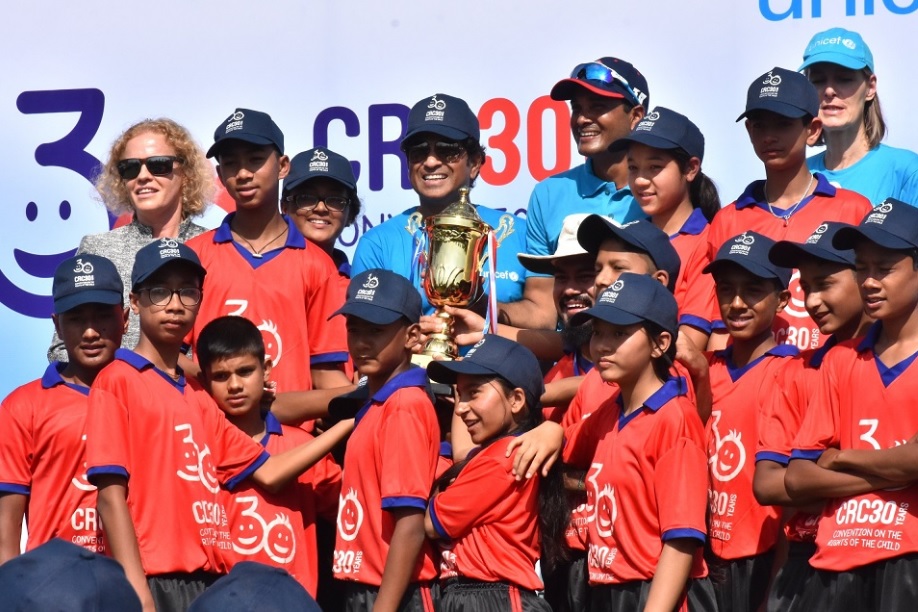
With a 7-run contribution, Sachin led his team to victory against Das’ team in winning the 45-run target at loss of 4 wickets.
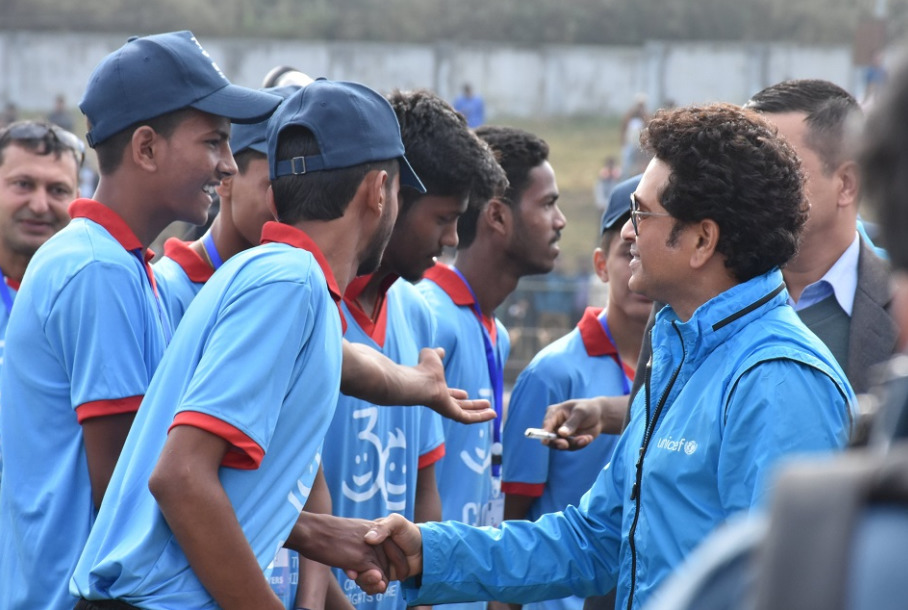
UNICEF organized this event marking the 30th anniversary of the ratification of ‘Convention on Children’s Rights Convention’.
Addressing the event, UNICEF representative to Nepal Elke Wisch commended for its efforts in improving lives of children. “But we need to continue to work to ensure children have the voice, skills and agency to become productive citizens of the future,” Elke said.
‘Let Them Fly’
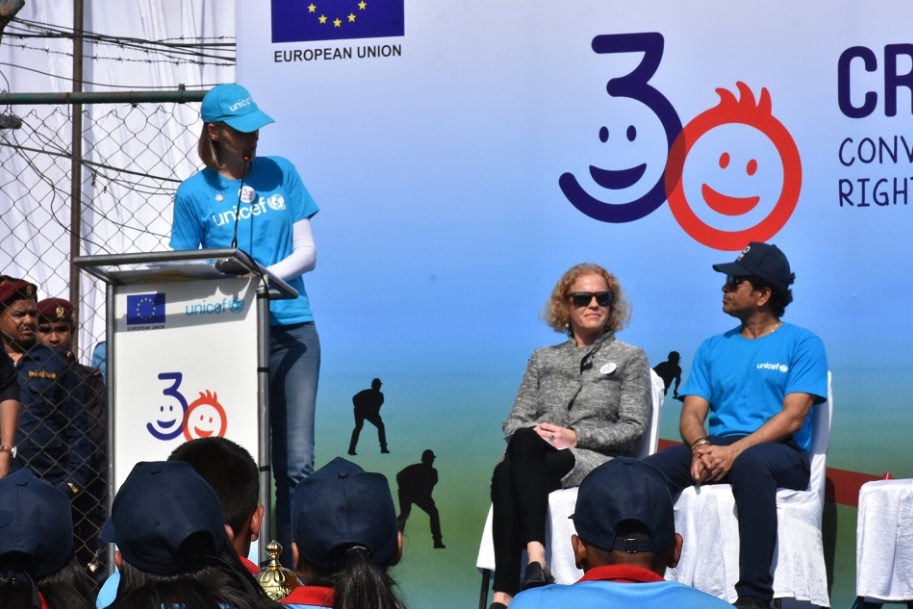
Addressing he ceremony, Sachin urged parents and caregivers to allow and support children in achieving what they love.
“Don’t clip their wings, let them fly,” he said, urging them to better understand what kids’ strength is while having a good time with them.
Sachin is also the goodwill ambassador to UNICEF.
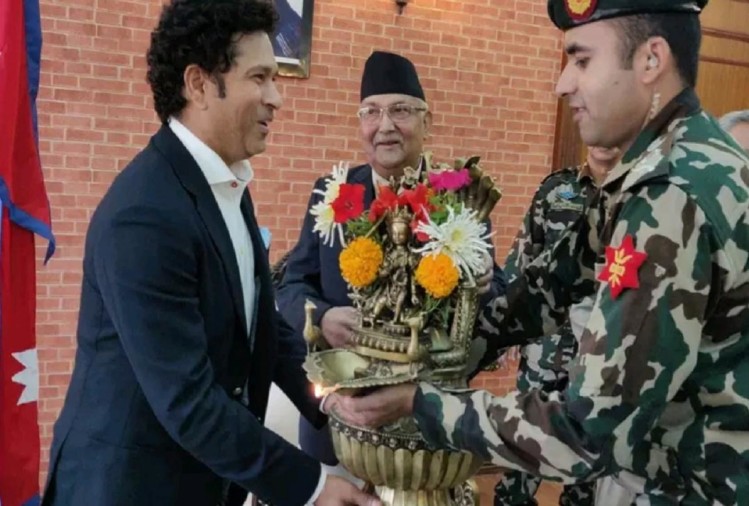
As part of his visit, Sachin met the PM KP Sharma Oli. “Pleased to meet Sachin, a famous cricket player, and UNICEF goodwill ambassador today. He appreciated the efforts undertaken by Nepal for the promotion of the rights of the children and their welfare,” Oli tweeted.
Pleased to meet with @sachin_rt, famous cricket player, and UNICEF goodwill ambassador today. He appreciated the efforts undertaken by Nepal for the promotion of the rights of the children and their welfare. pic.twitter.com/va9pENNVJd
— KP Sharma Oli (@PM_Nepal) November 17, 2019
The Indian cricketer also offered special prayers at the Pashupathinath temple.

The post UNICEF CRC@30: Sachin Visits Nepal, Plays 8-over Friendly Match! appeared first on Nepali Sansar.
]]>The post WHO South-East Asia Region Marks Five Years ‘Polio-free’ Certification appeared first on Nepali Sansar.
]]>Five years on, the Region not only continues to maintain its polio-free status but is demonstrating how the polio legacy can effectively strengthen overall immunization and other programs.
“Member countries, partners and the community themselves continue to work together to keep the crippling virus at bay. The polio program’s emphasis on innovation and reaching everyone, everywhere is being replicated by many other public health programs with impressive results,” said Dr. Poonam Khetrapal Singh, Regional Director, WHO South-East Asia Region.
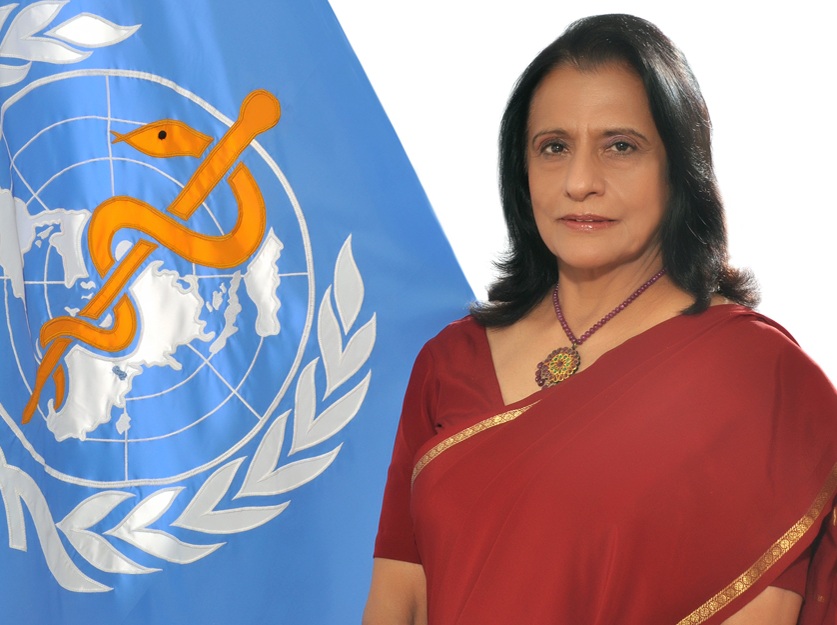
The last case of wild poliovirus in the Region was reported from West Bengal, India, where a two-year-old girl suffered polio paralysis on 13 January 2011. An intense response by the Government of India supported by WHO, UNICEF, Rotary International, and other partners ensured it remained the last case in WHO South-East Asia Region.
Post certification, these efforts continue. Every year, more than 32 million children across the Region are being reached with oral polio vaccines under routine immunization and through mass polio vaccination campaigns to maintain high population immunity against polio. In India, an additional 460 million doses of oral polio vaccines were given to children through four mass polio vaccination campaigns conducted in 2018.
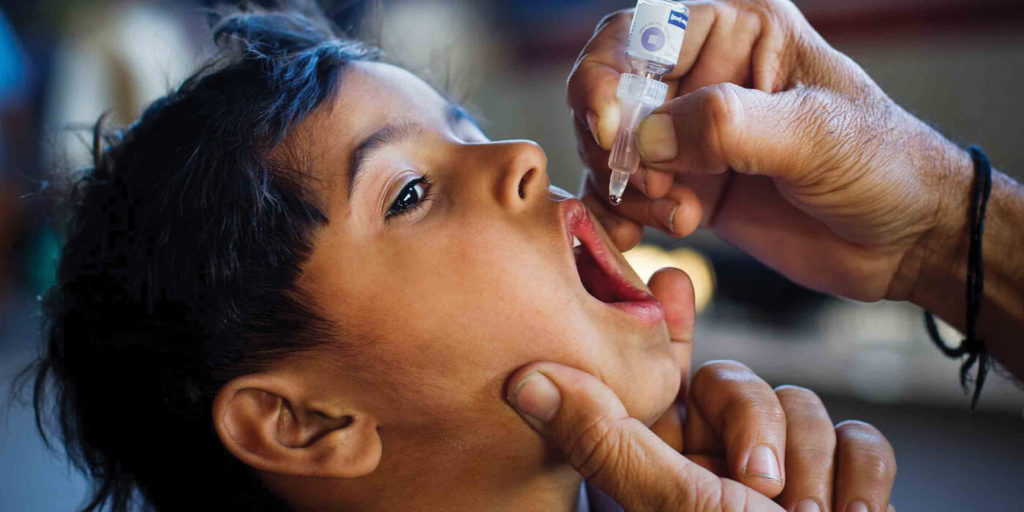
As a part of the vigilance for polio in the Region, surveillance for polio continues to be further strengthened. More than 75 000 stool samples were tested in 16 poliovirus laboratories in the Region in 2018. Environmental surveillance for poliovirus detection has been expanded three-fold in the last five years.
Samples are now collected for testing from 74 sites in India, Indonesia, Bangladesh, Nepal, Myanmar and Thailand. In 2014, environment surveillance was conducted only in India, from 23 sites.
While continuing to maintain a strict vigil against polio, the entire polio machinery in the Region is also geared towards strengthening routine immunization to further boost defense against polio as well as other vaccine preventable diseases. There has been a steady progress in immunization coverage of the basic vaccines provided in the first year of life.
Nearly 88% of children in the Region are receiving three doses of the basic vaccines before they achieve the age of one year.
In seven of the 11 countries, this coverage is over 90%. All countries have introduced at least two new vaccines under their routine immunization program to protect children from vaccine preventable diseases.
Polio programme and its lessons are guiding efforts to eliminate measles and control rubella, a flagship priority programme in WHO South-East Asia Region.
The polio networks are also supporting countries to strengthen vaccine preventable disease surveillance.
“This day is a reminder of our momentous victory against polio, a reminder of our commitment to health of our children, and a reminder of our potential, of our determination to turn impossible into possible,” the Regional Director said.
Also Read:
The post WHO South-East Asia Region Marks Five Years ‘Polio-free’ Certification appeared first on Nepali Sansar.
]]>The post Three-Point Strategy to Address Nepal’s Menstrual Taboos appeared first on Nepali Sansar.
]]>According to Echidna Global Scholar Gautam Gupta’s research, beliefs and restriction surrounding menstruation are two of the primary factors that obstruct girls from achieving success with education in South Asia.
Close to 90 percent of Nepali girls are still bound by restrictions in terms of mobility and are subject to social exclusion during that time.
Furthermore, many girls miss out school in their initial menstruation cycle for almost a week and about 3-4 days in the following cycles. Added to this, girls are also subject to discrimination from families and communities.
Listed below are some of the restrictions faced by menstruating girls in Nepal:
- Isolation and confinement to floor corner in the house or a neighbor’s house
- Restricted access to the kitchen and prayer room
- Conditional access to family events and celebrations
- Unavailability of pills during excess pain
- Unavailability or no access to sanitary pads, especially in low-income families who find commercial sanitary pads expensive
- Leakage issues and embarrassment that follows
- Added responsibility of washing clothes and scrubbing the floor during menstruation
- Increased responsibility on younger girls in the family when their mothers or other women members in the family are menstruating every month
- Insufficient resources such as running tap water and trash bags to deposit pads at schools
- Safety concerns when asked to stay in other people’s houses during that time
- Lack of nutrition due to restricted access to kitchen, especially in the absence of family members
The impacts of these practices can have lasting impacts on the mental and physical well-being on the bearer. Lack of information on menstrual hygiene can result in anxiety and physical signs like rashes, infections and prolonged illness.
In addition, inability to manage school, pending lessons and doubled household work turn many young girls into school dropouts.
The recent success at enforcing laws to end the cruel practice of Chhaupadi is a big step towards stopping inhuman practices against menstruating girls in Nepal.
To ensure a better future for Nepali girls during the time, Gupta has come up with a three-point strategy that works to address the problem from the root:
- Educating girls about Menstrual Health: According to Gupta’s research, girls can fight against societal taboos if they are aware of the science behind menstruation, get proper information about menstruation hygiene & management and knowledge of their rights. Additionally, girls who have gained training on menstrual hygiene management (MHM) use clean homemade pads and have educated other girls in maintaining the same. Furthermore, girls-centric empowerment programs inculcate leadership development, build girl-lead community events, and spread information about how health, safety, rights and resources contribute to the holistic development of girls.
- Enhanced Parent-Support: If girls get parental support, it reduces the number of obstacles in attending school. However, it is a big challenge as a parent do not easily give-up on such practices built over a long time. A systematic approach would include educating parents through literacy and gender-awareness programs. It has been noted that support from fathers encourages girls to continue their study. Some of the girls that Gupta spoke to said that their fathers were very supportive during their periods by buying sanitary pads and letting them sleep in their regular beds.
- A Supportive School Environment: At the school level, girl is confronted with many challenges. As per Nepal data, 50 percent of the schools in Nepal have separate toilets for girls. However, out of them, only a few had basic facilities such as running water, soap and trash bins. About half the adolescent girls miss school to avoid gender-unfriendly MHM facilities. Interestingly, two rural districts in Nepal were instrumental in proving that the availability of WASH (water, sanitation, and hygiene) facilities in schools including separate toilets increased the attendance of girls in schools and built their confidence to talk about menstruation. Moreover, the availability of female teachers in schools also has a positive impact on girls, the more the female teachers, the better the approach in dealing with menstruation issues.
Let’s hope that schools and communities implement the three-point strategy to land another milestone for Nepal.
Also Read:
- #MeToo Campaign Voices Sex Trafficking Concerns
- Women’s Equality Day in Nepal: Writing the Freedom of Tomorrow’s Women
The post Three-Point Strategy to Address Nepal’s Menstrual Taboos appeared first on Nepali Sansar.
]]>The post Child Marriages in Nepal: A Long-standing Concern Awaiting Eradication! appeared first on Nepali Sansar.
]]>But, digging to what extent that’s being applicable in the today’s world sheds light on real concerns surrounding a woman/girl child. One such major concern that many world nations have been fighting for centuries is ‘Child Marriages’.
Development over the years brought in societal transformation in many nations. However, there are few nations that are yet to see a full-fledged transition in all terms. Nepal is one among them.
Despite crossing over centuries, Nepal is still fighting with some age-old practices, one of them being ‘child marriages’.
Child marriages in Nepal has been a long matter of debate bothering many communities across the country for generations, with some of them strictly following it as a customary and socially-established practice.
Key Reasons and Impact
According to international bodies who reported Nepal’s scenario so far, child marriages in Nepal are majorly attributed to the lack of awareness, literacy, openness to change, social inclusion and other aspects among the majority of the population.
Reasons leading to child marriages in Nepal are complex, says UNICEF, pointing at poverty, low value attached to daughters and lack of access to education, caste system, and patriarchal culture as major impacting factors.
A survey based on the Nepal Multiple Indicator Cluster Survey (MICS) 2014 data reports high contribution of child marriages to the increasing school drop-outs among girls in the country.
Fig.1 Reasons for school dropout among women aged 20–24 years; 40% report marriage as the reason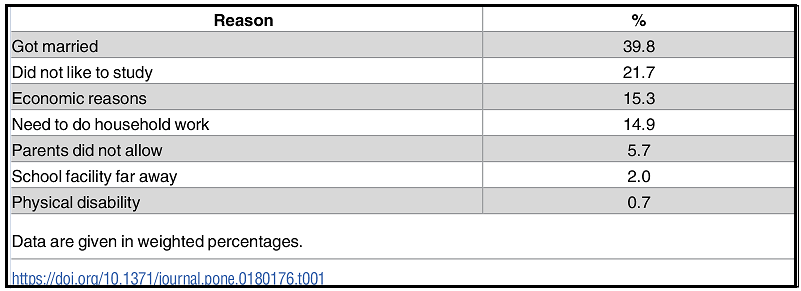
Fig. 2 Distribution of the highest grade completed by women aged 20–24 who left school due to child marriage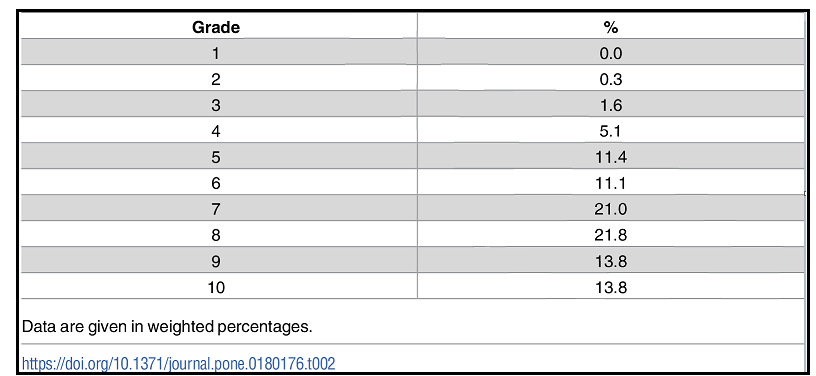
Fig. 3 Number and percentage of girls aged 15–17 by schooling status and marital status

Adding to the concerns, the April 2015 earthquake raised fears over supposed increase in number of child marriages owing to worsened situation of the public.
Key findings evaluated from various sources show:
- Nepal reports one of the highest rates of child marriages, globally
- Average prevalence of child marriage among both sexes at more than 40 percent as a whole, with girls at nearly 50 percent and boys at 30 percent
- Parents were the major factors to push for child marriages among nearly 60 percent of female cases and 55 percent of male cases
- There are also many cases where children themselves got engaged in ‘love marriages’ at an early age
- There has also been a shift in decision-making patterns from arranged marriages to love marriages, parents to children from parental pressure to love and fulfilment of sexual desire, and rural to rural-urban scenario
- A survey of households heads found 32 percent of them saying ‘parental pressure’ as a leading cause to child marriages, followed by children’s own desire and need for supporting household activities
- Early marriages were also attributed to over usage of mobile phone usage and media
- Measures to save money to be spent on organizing marriages also contributed to the rise
- Disliking among boys (from urban areas) for their first marriages often resulted in second marriages driving the need for child marriages among girls from rural areas
- Legal action against parents could control the menace to some extent in some cases, however, it did not work-out in case of children voluntarily engaging in love marriages upon self-interests
- Overall, there were hardly any genuine evidences showing child marriages as people avoided to do so owing to fears for legal matters
What Addresses the Menace?
Considering the aforementioned factors, there are few ways that renowned international rights bodies recommend, to stop child marriages. These include:
- Formation of vigilant groups and community networks with all the concerned stakeholders to check the spread of menace among the socially-marginalized communities, who are reportedly found to be more prone to the situation
- Need for spread of awareness among adolescent girls and boys on the ill-effects of getting married earlier
- Empowering young girls and boys with appropriate comprehensive sex education at the school level, along with skill-based training
- Conducting awareness programs through respective primary health centers at the community levels
- Establishment of Focused Group Discussions (FGDs) involving active local participants such as youngsters for a detailed understanding on causes, patterns and impact of child marriages and practices encouraging the same
- Programs that encourage school enrolment among girls and follow gender transformative approach should be designed
- Strengthening of networks that are combination of communities and related stakeholders from local to national levels
- To the next level, linking of local responses against the menace to the global aid organizations that can support the cause
Social and human rights organizations of Nepal feel that the existence of child marriages menace is obstructing the country’s progress in line with the Millennium Development Goals (MDGs) set by the United Nations.
Despite the existence of relevant laws that stipulate 20 years as the legal age for marriage for both girls and boys, the Ministry of Health records show nearly 30 percent of girls getting married at 15-17 years of age.
“We certainly need to strongly lobby against early marriage, but we are hampered by a very poor monitoring system to implement the existing law. Our biggest challenge is the family’s attitude towards educating their girls,” says Dibya Dawadi, Deputy Director-General, Department of Education, Nepal.
MDGs strongly pitch for few things pertaining to human rights and education. While MDG 2 pitches for universal primary education, MDG 3 finds the significance of promoting gender equality and women empowerment, MDG 4 is deeply concerned about controlling child mortality and MDG 5 calls for improvement of maternal health.
Unfortunately, child marriages work against all these MDGs stopping the sustainable growth of the Nepali citizens.
Activists feel that the change has to start from touching roots of the problem i.e. addressing unemployment, economic situation, among others forcing families to indulge in anti-social practices like child marriages.
What Key Associations & Their Leaders Say?
Unless people are made aware of devastating multi-pronged effects of early marriage, they will not strive to eliminate it from society. People should also be made aware of human rights, so that they are aware of their own rights and the rights of children. Only then will parents be motivated to ensure that their children enjoy their right to childhood – World Plan International
Child marriage is a common problem in Nepal’s rural areas. About 50 percent marriages take place before youth turn 18 due to a lack of awareness, poverty and weak enforcement of child marriage legislation. – Plan International
Women living in rural areas are more likely to be married as children those in urban areas. Nepal has one of the highest rates of child marriage in Asia – for both girls and boys. Although the legal age of unions for both sexes is 20, more than a third of young women aged 20-24 report that they were married by the age of 18, and just over one in ten by 15. – UNICEF
Child marriage deprives girls of educational opportunities. However, supply-side issues such as poor access to school, low quality of educational provision, and poor skilled employment prospects, as well as demand side challenges such as concerns over safety and security or the need for unpaid household labor may be important contributing factors to child marriage. Girls may therefore discontinue their education due to a range of factors and then, as they are unable to complete their education, enter into marriage. – A Study based on the Nepal Multiple Indicator Cluster Survey (MICS) 2014
Early marriage should be stopped because it not only affects girls’ education but also their health. After marriage, these girls rarely come back to school and even if they do, their performance is very poor. Early marriage negatively impacts their self-confidence. – Sumon Tuladhar, Education Specialist at UNICEF Nepal
Sticking a mother in jail is not helpful when she may have other young children with no one to feed and protect them. Child marriage is extreme denial of children’s rights. Many girls also suffer from abusive marriages as they are married to older boys. – Helen Sherpa from World Education
Child marriage not only discriminates against women and girls in Nepal, it is a violation of their basic human rights. Young brides are pressured to give birth soon after marriage and are susceptible to both domestic and sexual violence—escalating harms that have a profound negative impact on the health, education, employment and dignity of women and girls. The government of Nepal has an immediate obligation to stop child marriage. – Melissa Upreti, Regional Director for Asia, Center for Reproductive Rights
The government needs to prioritize the implementation of laws prohibiting child marriage in Nepal. We have to guarantee that our women and young girls can exercise their constitutionally protected rights and end this discrimination against them in the name of marriage. – Seikh Chand Tara, Chairperson, National Women Commission
On an End Note
Hope, continuous efforts by governments in the form of laws and human rights activists supported by global aid agencies will address the long-standing menace of child marriages in Nepal, contributing to the country’s developmental path.
The post Child Marriages in Nepal: A Long-standing Concern Awaiting Eradication! appeared first on Nepali Sansar.
]]>The post Human Trafficking in Nepal – Relentless Fight for Rights Continues! appeared first on Nepali Sansar.
]]>Even then, it’s tough to say we are on path of development, considering the illicit activities such as exploitation of #humanrights & freedom, #SocialInequality and #ChildLabor, among others.
One such demotivating aspect that makes us rethink of development is #HumanTrafficking, the menace that has been deciding the fate of many innocents, globally.
Standing next to drug trafficking and arms dealing, human trafficking remains to be a battle and a growing criminal activity for many nations despite strict policy-level decisions, and Nepal is no exception! In fact, more prone to girl and #womentrafficking in particular.
Relentless efforts by government, social activists and media over the years literally went in vain in tackling #HumanTraffickingInNepal.
“First you have to learn to take them as your own child. Then you will feel the sorrow and then the strength comes out from you to protect them” – Says Anuradha Koirala
Let’s take a closer look at human trafficking scenario in Nepal!
A Glance
Nepal is one of the key source countries globally known for forced labor and sex trafficking involving men, women and children. Human trafficking in Nepal’s case can be observed in three different ways:
1) Within the Country: Human trafficking within Nepal typically involves #traffickingpeople from rural to urban locations. Especially, the young girls and women trafficked from rural areas are subjected to #sexualexploitation across enjoyment spots such as pubs, hotels, and other places falling under the ambit of tourism centers. While some of these women voluntarily take up the act, many of them were literally forced into the act and end up as slaves after a period, either #bondedlabor or as workers across low-profile jobs in factories etc.
2) Across the Indo-Nepal Border: Girl and women trafficking across the Indo-Nepal border is one most-heard aspect. Over the years, many girls have reportedly been trafficked to various India’s urban areas and used for sexual exploitation across brothel houses and child labor across unorganized and informal sectors. Surprisingly, records show the presence of more than 1 lakh trafficked #Nepaliwomen across India’s urban locations.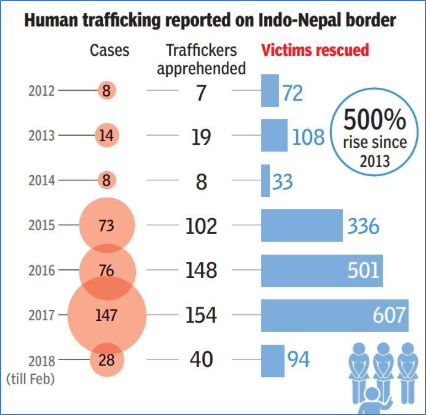
3) Beyond Borders: Besides the closest borders like India, #NepaliVictims have also reportedly been trafficked to various other destinations such as Bangladesh, Pakistan, Russia, Hong Kong, Malaysia and some Middle East countries. India has reportedly been a transit for trafficking of Nepali women to regions such as Western Asia and Middle East, among others. Nepali victims to non-Indian destinations are most likely subjected to sexual exploitation, in particular to non-brothels.
Here are some shocking facts you should know about human trafficking in Nepal’s case:
- Each year, around 1-2 lakh Nepali women or girls are trafficked to Indian brothels at an average selling price of INR 50,000-70,000
- Trafficked Nepali girls or women are majorly exploited for their beauty (fair and lighter skin tone) and virgins among them are often believed to have ability to cure #AIDS
- #Poverty, #illiteracy and less earning power are among key reasons subjecting Nepali women to trafficking
- #Slavery remains to be the oldest forms of #ForcedLabor in case of Nepal, with bonded labor dominating the scenario across agriculture brick kilns, among other industries
- Child labor is another aspect of human trafficking that Nepal is known for. The country is home to 1.6 million children (between 5-17 years) subjected to different forms of child labor, some of them often working in exchange of money
- Three-fourth of children engaged in child labor in Nepal are below 14 years with majority of them being girls
- According to #NepalHumanDevelopmentReport 2004, nearly 20 percent of Nepalis trafficked to Asian countries fall are below 16 years of age
- Trafficking victims of Nepal basically hail from traditionally disadvantaged and #marginalizedgroups
- Promises of better jobs across foreign destinations remains to be one of the key reasons driving human trafficking from Nepal
- According to Nepal’s Ministry for Women & Social Welfare, 26 of Nepal’s 75 districts are prone to trafficking menace
- Peak trafficking is usually observed between June and late August or early September, reports an #IndianArmedForces survey
- According to #UNICEF, an estimated 11,000-13,000 girls and women are working in the “night entertainment industry” in Kathmandu Valley alone
- According to #UNODC Global Report on Trafficking in Persons 2012, human trafficking from Nepal during 2007-2009 involved 36 percent were children (33 percent girls and 3 percent boys) and 64% adults (women 53 percent and men 11 percent)
- Sashastra Seema Bal, one of the Indian Armed Police Forces, in its report on ‘Human Trafficking on Indo-Nepal border’ reported a surprising 500 percent rise in number of humans trafficked from Nepal to India over the last five years period since 2013, with majority of them from rural and Terai regions of Nepal
List not exhaustive! There are many such facts about human trafficking in Nepal that can touch your emotions.
Governmental Efforts
Nepal Government has taken several initiatives over the years to tackle the menace.
According to UNICEF, Nepal already agrees to various international legal frameworks to protect its women and children from the human trafficking menace, which include:
- #UN Convention against Transnational Organized Crime
- #ILO Convention No. 182 on the Worst Forms of Child Labor
- ILO Forced Labor Convention to Combat Trafficking and Forced labor
- CRC Optional Protocol on the Sale of Children, Child Prostitution and Child Pornography
- UN Protocol to Prevent, Suppress and Punish Trafficking in Persons, Especially Women and Children
- #SAARC Convention on Preventing and Combating Trafficking in Women and Children for Prostitution
“Accept What’S Done To Their Children, If You Don’t Mind It Being Done To Yours – Children Trafficking”
The country also has in place a domestic legal framework including:
- Human Trafficking & Transportation Control Act (HTTCA)
- Human Trafficking & Transportation (Control) Regulation
“Human Trafficking Is Modern Day Slavery”
Besides, Nepal also has many agencies working for it such as:
- Secretariat to combat trafficking under the Ministry of Women, Children and Social Welfare, Women and Children Offices operating across 75 districts
- District Committees on anti-trafficking across all 75 districts & local committees
- Nepal Police, Court, Attorney General’s Office and Embassy offices across other countries
- Nepal Government has ramped up its anti-trafficking efforts post the 2015 earthquake; stopped inter-country adoption and also established various measures such as conducting awareness programs across communities, enhancement of local communities and funding various rehabilitation centers
- UNICEF has also extended its support to governmental efforts by strengthening various police stations and checkpoints around the country covering the border areas
- The Department of Immigration has also been training the country’s immigration officials on ways to tackle trafficking of labor from the country
- Government has launched various national and local level campaigns using mass media
- Local Governments are also given various directives to tackle trafficking; for example, children cannot be moved across districts without legal documents or guardian
- Government has also been conducting frequent meetings with the related stakeholders including NGOs, agencies, among others
There are many other measures that the government has been adopting to fight the human trafficking menace.
Hope, such continuous efforts involving stringent government regulations, effective public participation and relentless measures by NGOs & related stakeholders will help Nepal fight the human trafficking menace completely.
What Experts Say?
“Child slavery is a crime against humanity. Humanity itself is at stake here.” – Kailash Satyarthi, Indian Activist
“Life is a gift of our Creator…And it should NEVER be for SALE.”
It is slavery in the modern age. Every year thousands of people, mainly women and children, are exploited by criminals who use them for forced labor or the sex trade. No country is immune. Almost all play a part, either as a source of trafficked people, transit point or destination. – United Nations Secretary-General, Ban Ki-moon
“Slavery was abolished 150 years ago… and yet there are more people in slavery today than any other time in our history.”
“Human trafficking is a crime against humanity. We must unite our efforts to free victims and stop this crime that’s become ever more aggressive, that threatens not just individuals, but the foundational values of society.” – Pope Francis
The post Human Trafficking in Nepal – Relentless Fight for Rights Continues! appeared first on Nepali Sansar.
]]>The post Global Health Issues: Rise of HIV Among Teenage Girls, Reports UNICEF appeared first on Nepali Sansar.
]]>Despite many global initiatives, HIV continues to be a serious problem globally for people of all ages.
In its recent release, the United Nations Institute for Children Education Fund (UNICEF) made some shocking revelations about the rise in spread of HIV among young girls.
Around 30 teenagers aged 15-19 were newly infected with HIV per hour in 2017,” said UNICEF in its report titled ‘Women: At the Heart of the HIV Response for Children’ presented at the International AIDS Conference 2018 in Amsterdam.
The report that examined HIV and AIDS among the children and mothers found that “every three minutes, a teenage girl is infected by HIV”.
“HIV thrives among the most vulnerable and marginalized, leaving teenage girls at the center of the crisis,” UNICEF Executive Director Henrietta Fore said in a statement.
Key Findings
UNICEF notes that the increasing prevalence of HIV among adolescents is pulling back the global efforts taken over the years to tackle the epidemic.
“Adolescents continue to bear the brunt of the epidemic and that failure to reach them is slowing down the progress the world has made in the last two decades in tackling the AIDS epidemic,” adds UNICEF.
The report found:
- Adolescents between the ages of 10-19 years account for almost two-thirds of the 3 million
population in the 0-19 age group suffering from HIV - Even while deaths for all other age groups, including adults, have been decreasing since 2010, deaths among older adolescents (15-19) have seen no reduction.
- Around 1.2 million population in the age group of 15-19 years were living with HIV in 2017, with ‘three out of five of them being girls’.
The report noted that early sex and related issues, lack of proper counselling and testing services are among major factors leading to the spread of epidemic among girls.
We need to make girls and women secure enough economically that they don’t have to turn to sex work. We need to make sure they have the right information about how HIV is transmitted and how to protect themselves, Angelique Kidjo, UNICEF Goodwill Ambassador said in the report.
Addressing Concerns
In its report, UNICEF informed about its efforts in collaboration with UNAIDS and other partners over the period to tackle the epidemic.
Some of them include:
- All In to End Adolescent AIDS- A program that aims to reach adolescents in 25 priority countries that has the world’s highest adolescent population suffering from HIV.
- Start Free, Stay Free, AIDS Free– A special framework aimed at controlling the spread of HIV among adolescents and young women to less than 100,000 by 2020.
- The HIV Prevention 2020 Road Map– An action plan to expedite HIV prevention measures with key focus on structural barriers such as punitive laws and lack of adequate services, while also highlighting the role of communities in executing the measures.
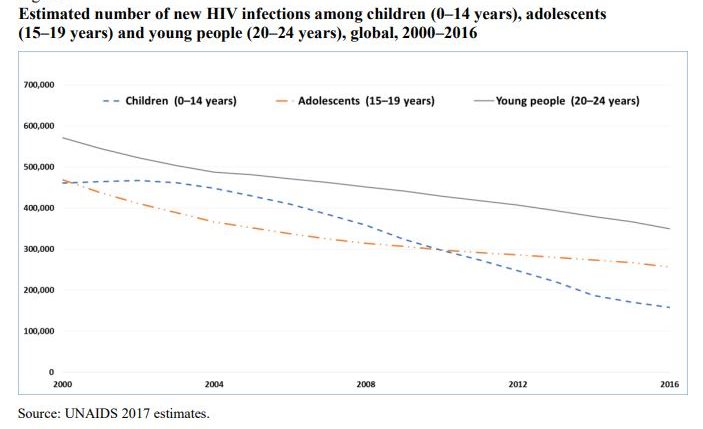
As a result of these initiatives, UNICEF could achieve a drop in the number of new infections among children (in the age group of 0-4 years) by one-third during the 2010-17 period.
According to UNICEF, 4 out of 5 pregnant women with HIV are accessing treatment to keep them healthy and reduce the risk of transmission to their babies in the current scenario.
“Adolescent girls and young women are particularly impacted. Without effective prevention of HIV, they are likely to pass along the virus to their babies, continuing the cycle of infection to the next generation,” UNICEF adds.
“Women are the most affected by this epidemic – both in the number of infections and as chief caregivers for those with the disease – and should continue to be at the forefront of the fight against it,” Fore said in an ending note.
Also Read:
- Global Health Issues: Nepal Among the First Countries to Fight Diabetic Retinopathy
- Global Health Issues: 2016 Nepal Demographic and Health Survey Highlights
The post Global Health Issues: Rise of HIV Among Teenage Girls, Reports UNICEF appeared first on Nepali Sansar.
]]>The post Sangita BK – An Inspiration to Nepali Women Generation appeared first on Nepali Sansar.
]]>The last three years has seen her transform from a girl to an activist. During this time, she formed nice adolescent girl support groups and on her own has stopped at least a dozen child marriages. Currently leading the Pariwartan Adolescent Girls’ circle, Sangita is teaching 28 girls to stand up for their rights.
Climbing newer heights in her fight against child marriages, she convinced the local government authority to allot a budget to help these girls progress with their empowerment activities.
Early Childhood and the Challenges
Sangita and her family members are from the marginalized Dalit ethnic group, or caste. Being the target of inequality since her childhood, Sangita still has memories of being discriminated based on caste. She says, “I asked my parents so many times: how can such discrimination exist in our society?”
She was also faced with gender-equality, where in she was going to be married while she was still in her 10th grade. Her parents had stated that they wanted her to get married.
If It were not for her knowledge about the downsides of child marriage, she would have been a victim of child marriage too. She says, “Had I married back then, I would have definitely been out of school”. She had been educated through a program supported by UNFPA and the government’s Women and Children’s Office, which trains community leaders, activists and youth about human rights, as well as the harms of child marriage
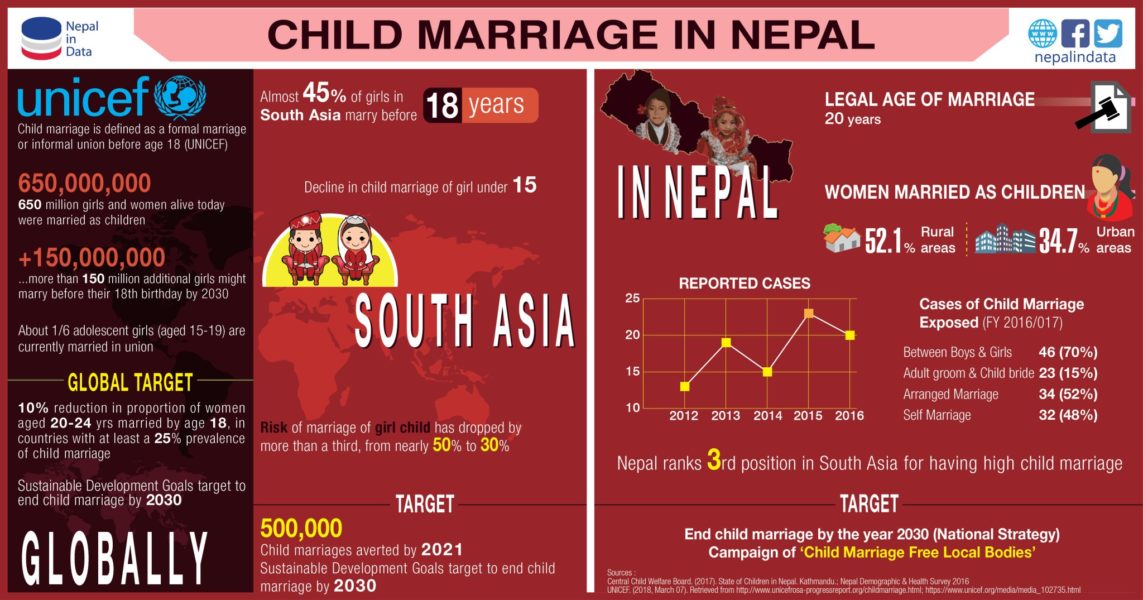 In Nepal, Child marriage is a common country. As per statistics, more than a third of women, aged 20-24 were married before the age of 18 years.
In Nepal, Child marriage is a common country. As per statistics, more than a third of women, aged 20-24 were married before the age of 18 years.
The practice can prove very fatal to girls, they either become victims of abuse or suffer with early pregnancies that their bodies will not be able to bear. It also forces them to drop out of their education which is very crucial to their growth. (Image Source: Nepalindata)
Sangita says” I was not against my parents but against their mindset that a girl should be married off at an early age.” “I repeatedly told them that for any girl, education and empowering come before marriage. And they were convinced.”
Empowering Young Girls
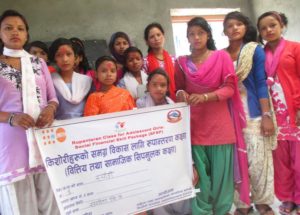 Sangita took part in UNFPA-supported leadership trainings in 2013 and 2015. There, she equipped herself with counselling, social and financial skills that she could share with her adolescent girls’ groups.
Sangita took part in UNFPA-supported leadership trainings in 2013 and 2015. There, she equipped herself with counselling, social and financial skills that she could share with her adolescent girls’ groups.
Rupantaran helps girls develop a range of skills including accounting, nutrition, sexual and reproductive health and civic participation. With support from District Women and Children’s Office and the UNFPA-UNICEF Global Program to Accelerate Action to End Child Marriage, Rupantaran has reached more than 5,000 girls like Sangita since 2015.
The knowledge I acquired from this training has helped me give a voice to other girls so that they can take ownership of their lives and develop their leadership skills.”
Contributions to the Community
The girls’ groups she started have made a strong impact on the girls in Bajhang. Many members were able to convince their parents into cancelling or postponing their marriages. They have been empowered to the extent that they intervene whenever child marriages are being arranged in the community.
These girls also conduct peer education sessions in their schools, community rallies and in door-to-door campaigns.
Other Initiatives
They also address Chaupadi, the practice of secluding women during menstruation and that too in unsafe and unhygienic conditions and other practices like gender-based violence and the caste-discrimination.
The Difference Made
Now a graduate, Sangita is still the same passionate young girl she was. She treks five hours a day to and back from her class. Speaking about Sangita, Tita Magar, official at the Women and Children’s Office says, “She is a role model in her community and family, and many girls look up to her.”
Inspiration to the Generations
Sangita has a set a special mark for herself among the women of Nepal and worldwide. Her efforts will continue to be remembered for ages to come.
The post Sangita BK – An Inspiration to Nepali Women Generation appeared first on Nepali Sansar.
]]>
